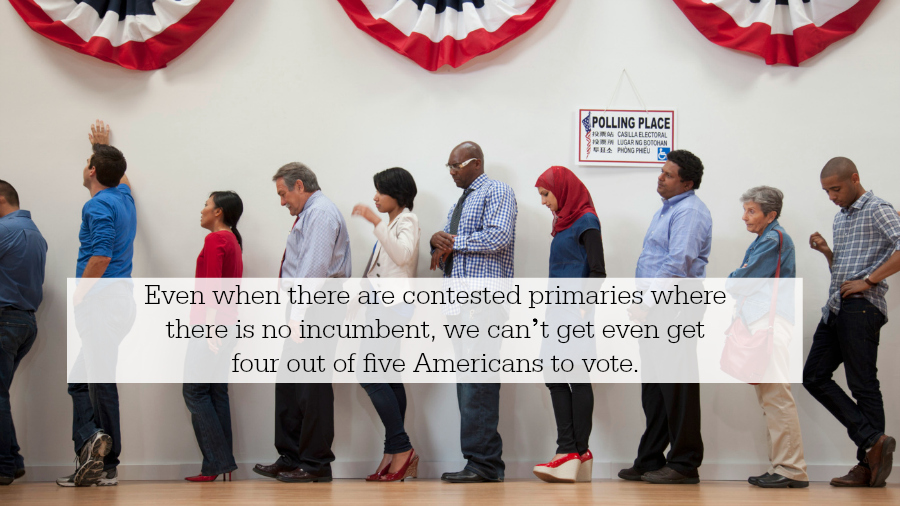Voter turnout this election season has been higher than normal. But data from Pew Research helps put the higher than normal numbers of voters in their proper perspective. Through the first 12 primaries of 2016, the combined Republican turnout has been the highest since at least 1980. Democratic turnout has been the highest since 1992, although there was a high turnout in 2008.
Now for the reality check. The combined Republican turnout was only 17.3 percent of eligible voters. The combined Democratic turnout was 11.7 percent. Those percentages should discourage you. Even when there are contested primaries where there is no incumbent, we can’t get even get four out of five Americans to vote.
During the general election more Americans vote than in the primaries. In 2012, for example, 129.1 million Americans voted. That is 53.6 percent of the voting age population compared to fewer than 28 million who voted in the primaries. In other words, there were 100 million more Americans who voted in the general election that did not vote in the primaries.
That means we should be careful not to extrapolate from the primaries to the general election. Supporters of Donald Trump argue that he is turning out lots of people to vote for him, and that will assure his victory in November. Actually, many of the people who may vote for him or Hillary Clinton are not even voting in the primaries.
It is also worth mentioning that Donald Trump received about a third of the votes in the primaries. But that is one-third of the 17 percent who voted. In other words, he received less than 6 percent of eligible Republican voters. Once again, that is why it is hard to extrapolate from the primaries to the general election.
 Listen Online
Listen Online Watch Online
Watch Online Find a Station in Your Area
Find a Station in Your Area










 Listen Now
Listen Now Watch Online
Watch Online
